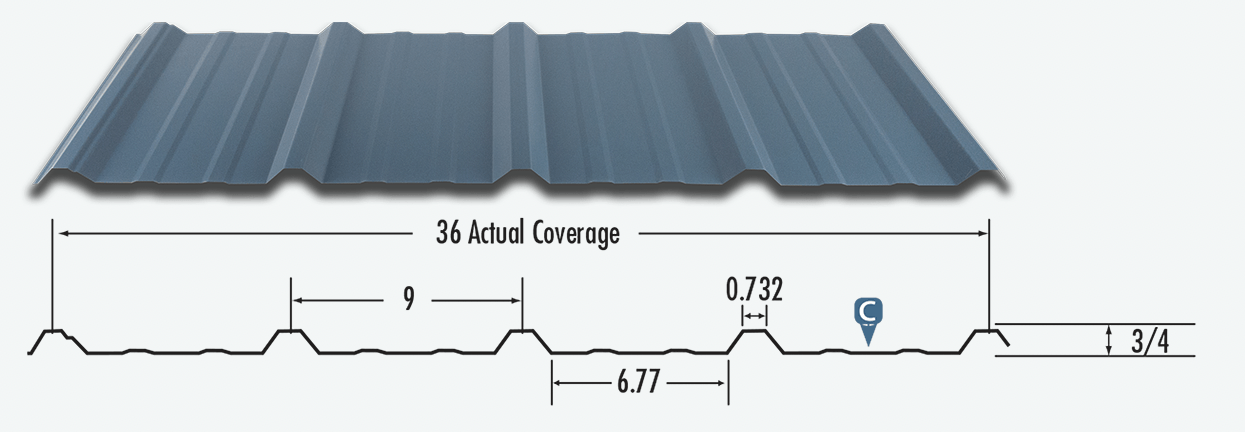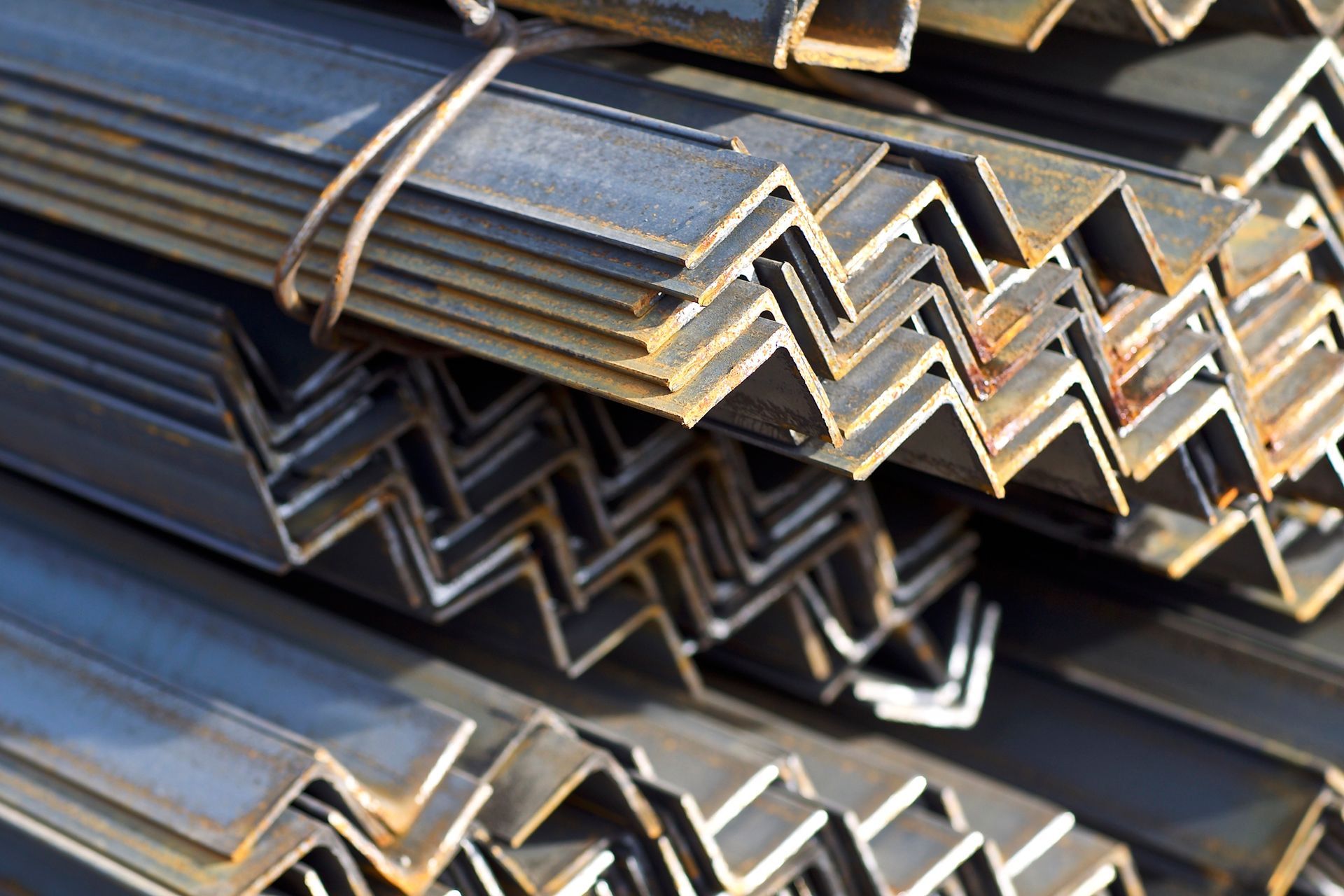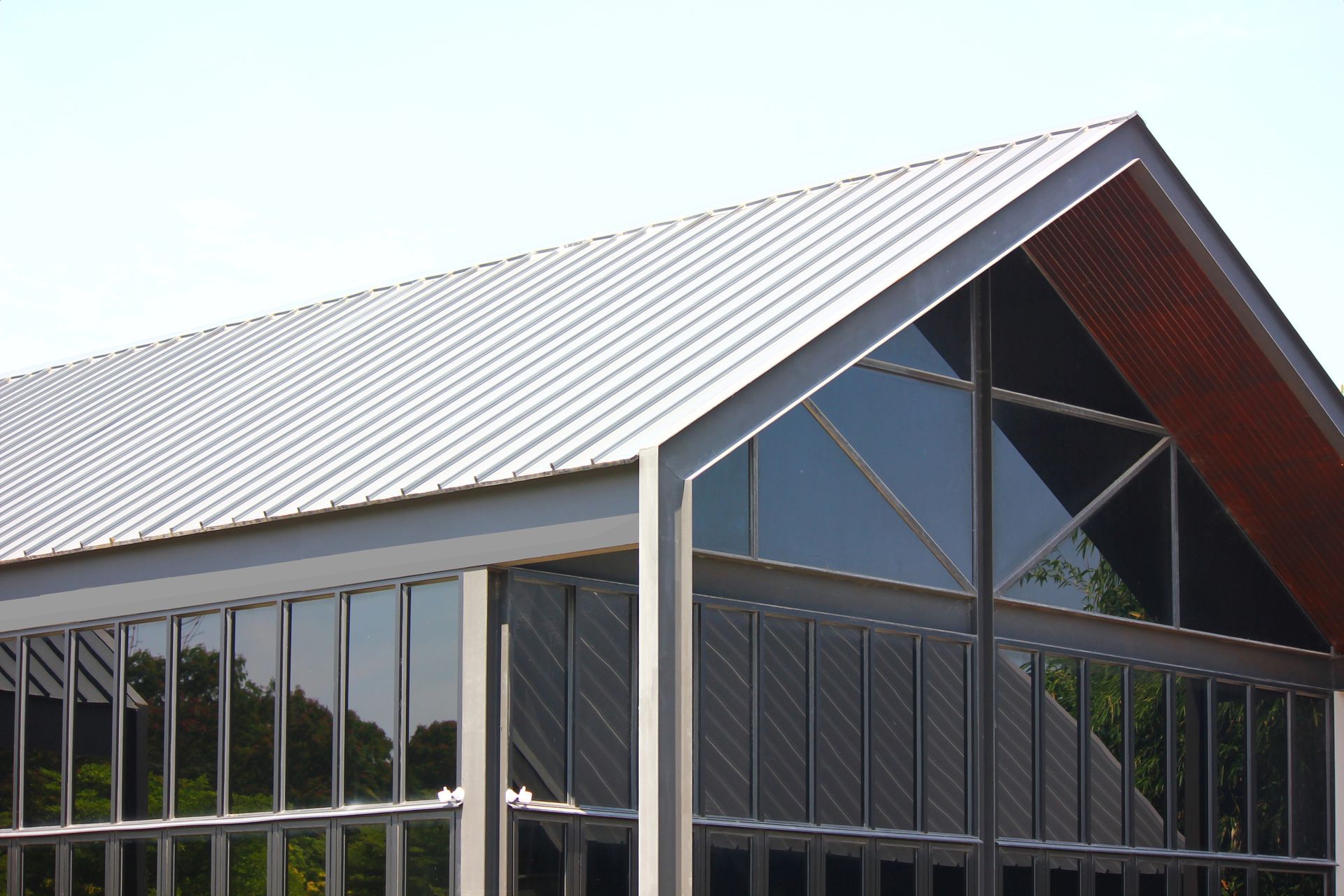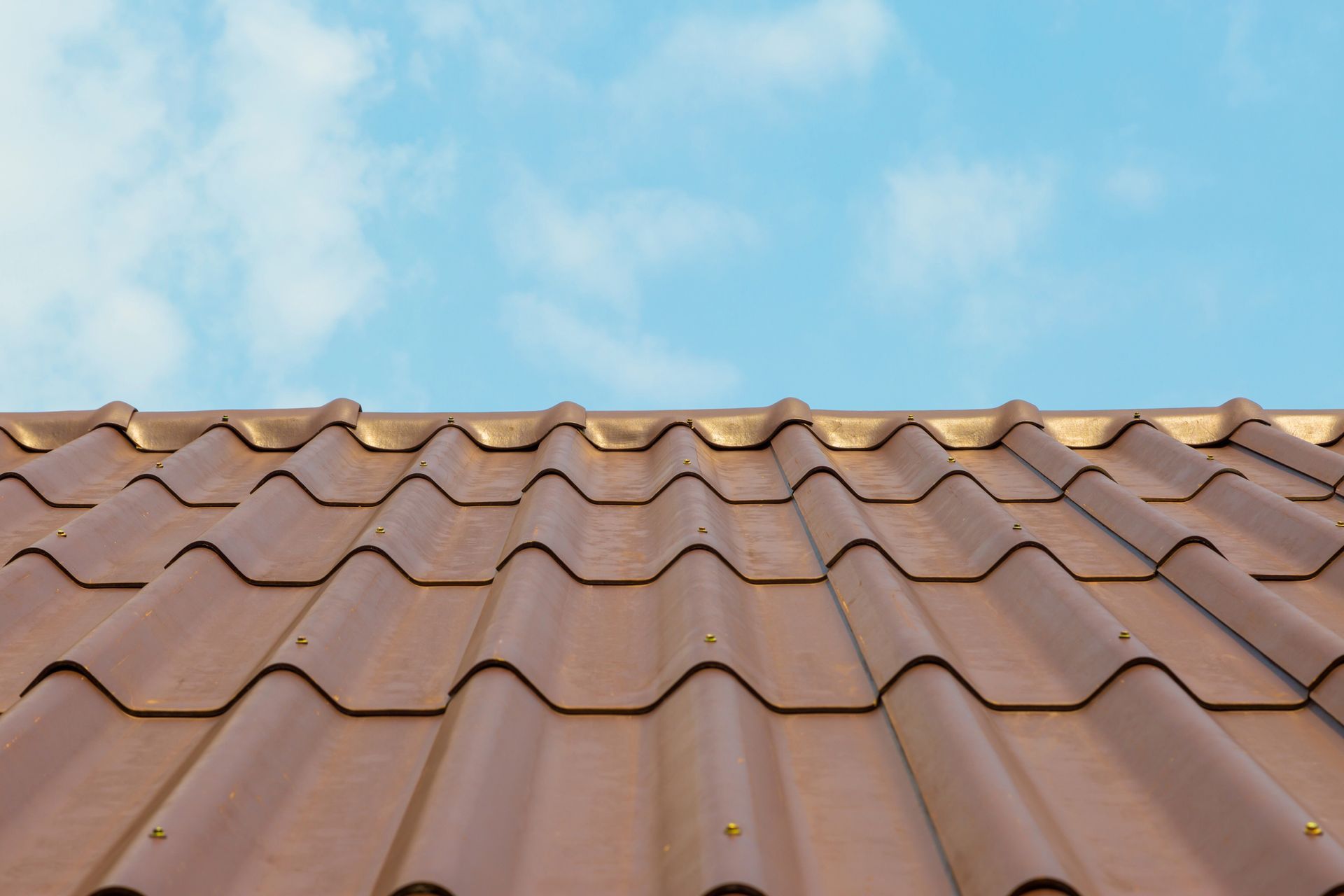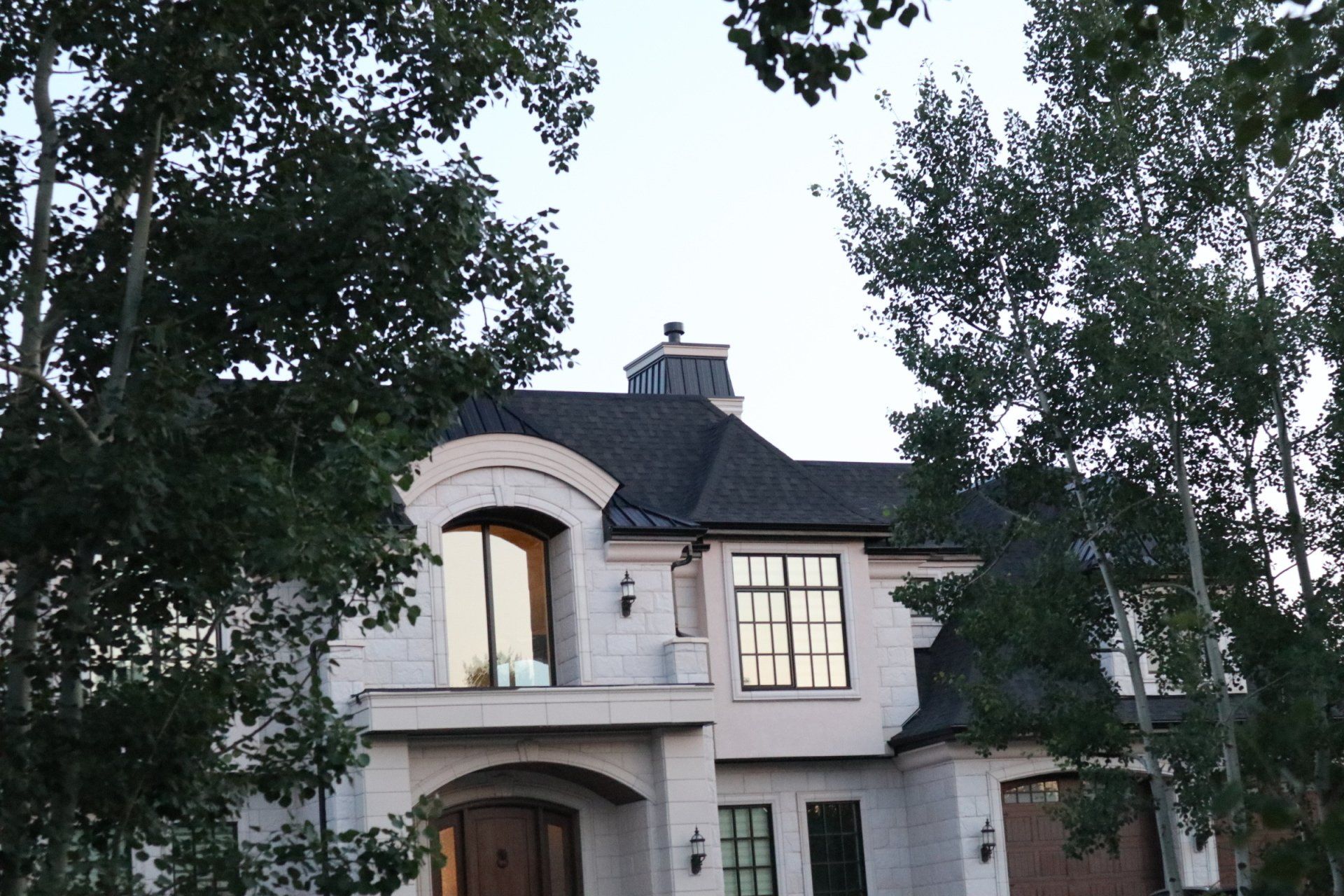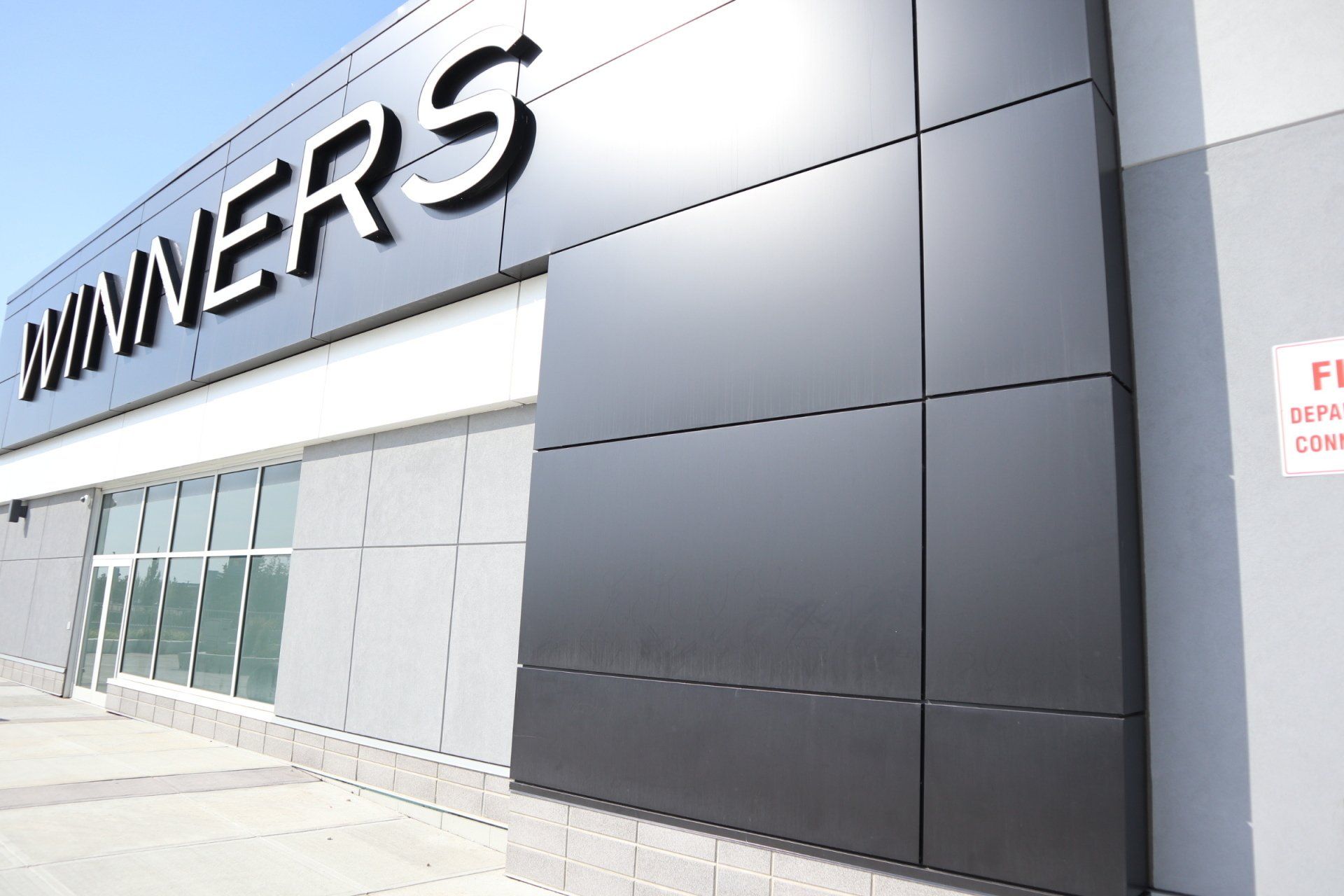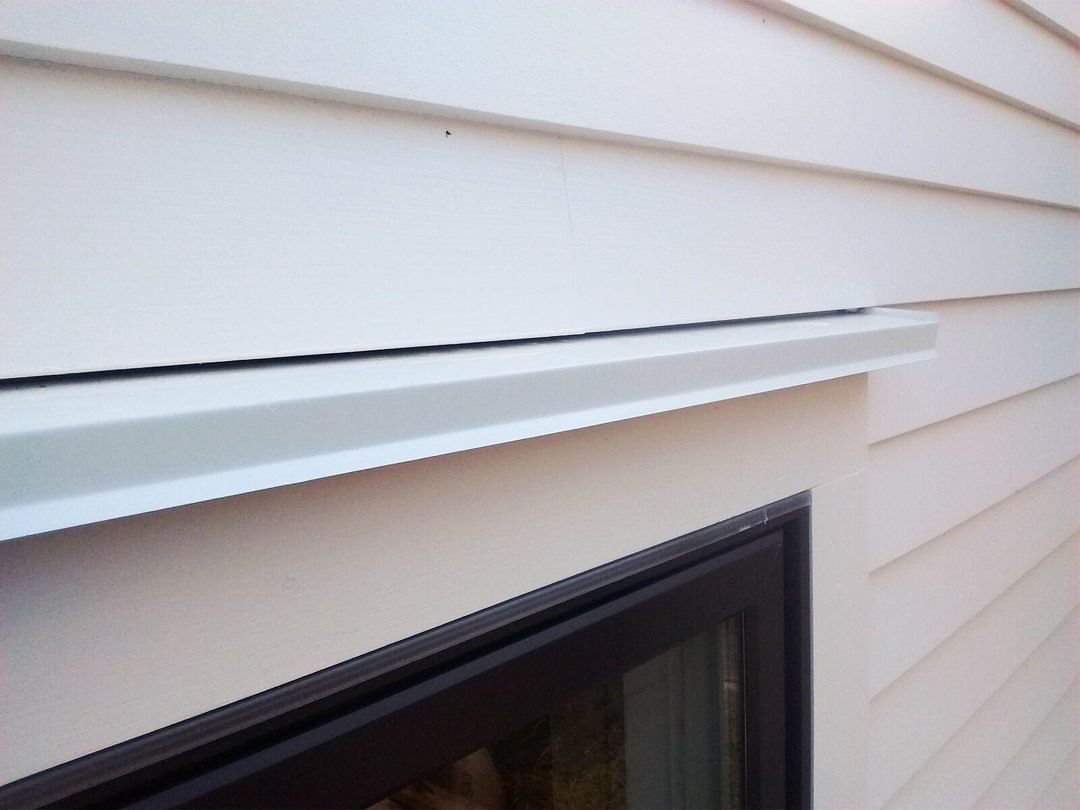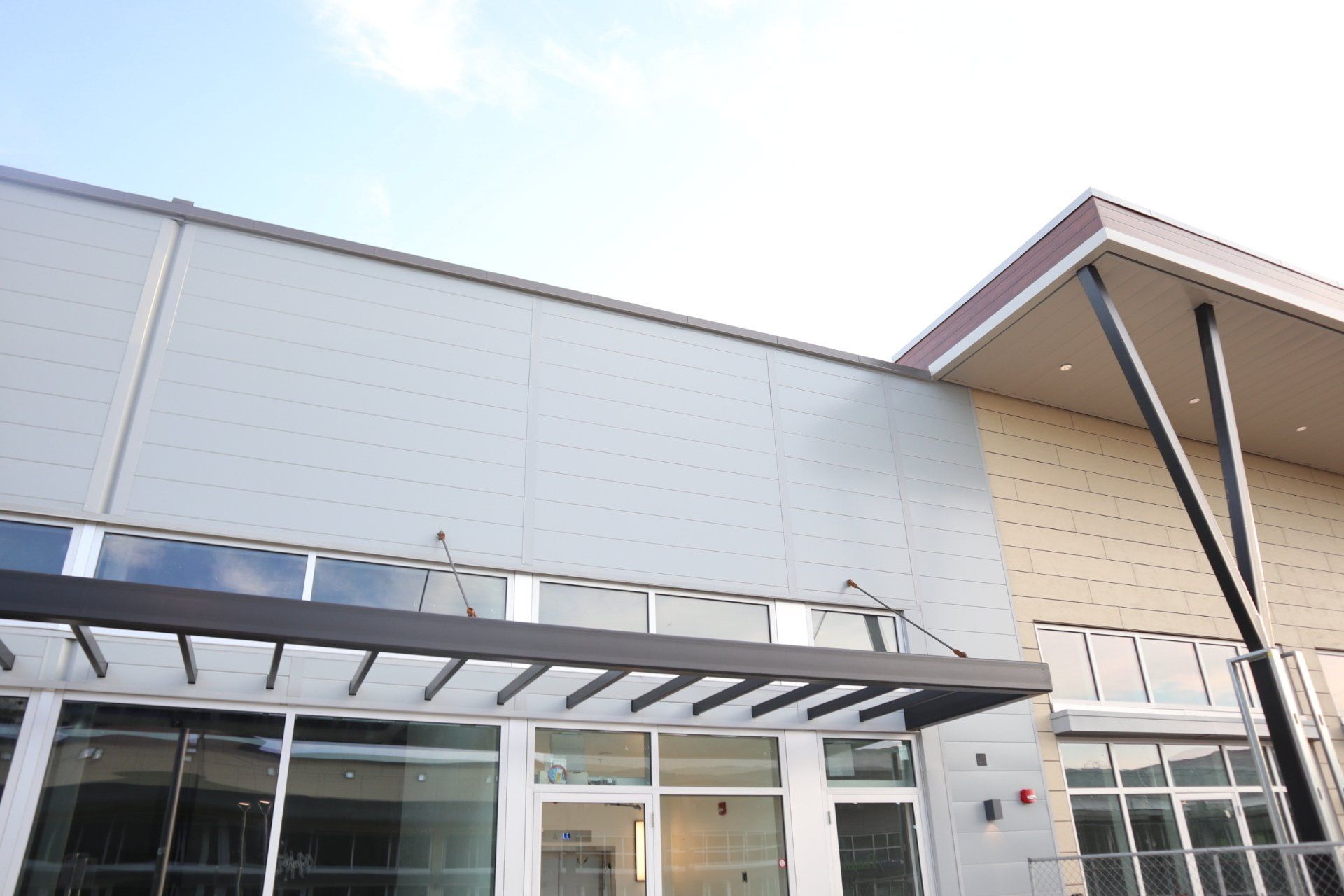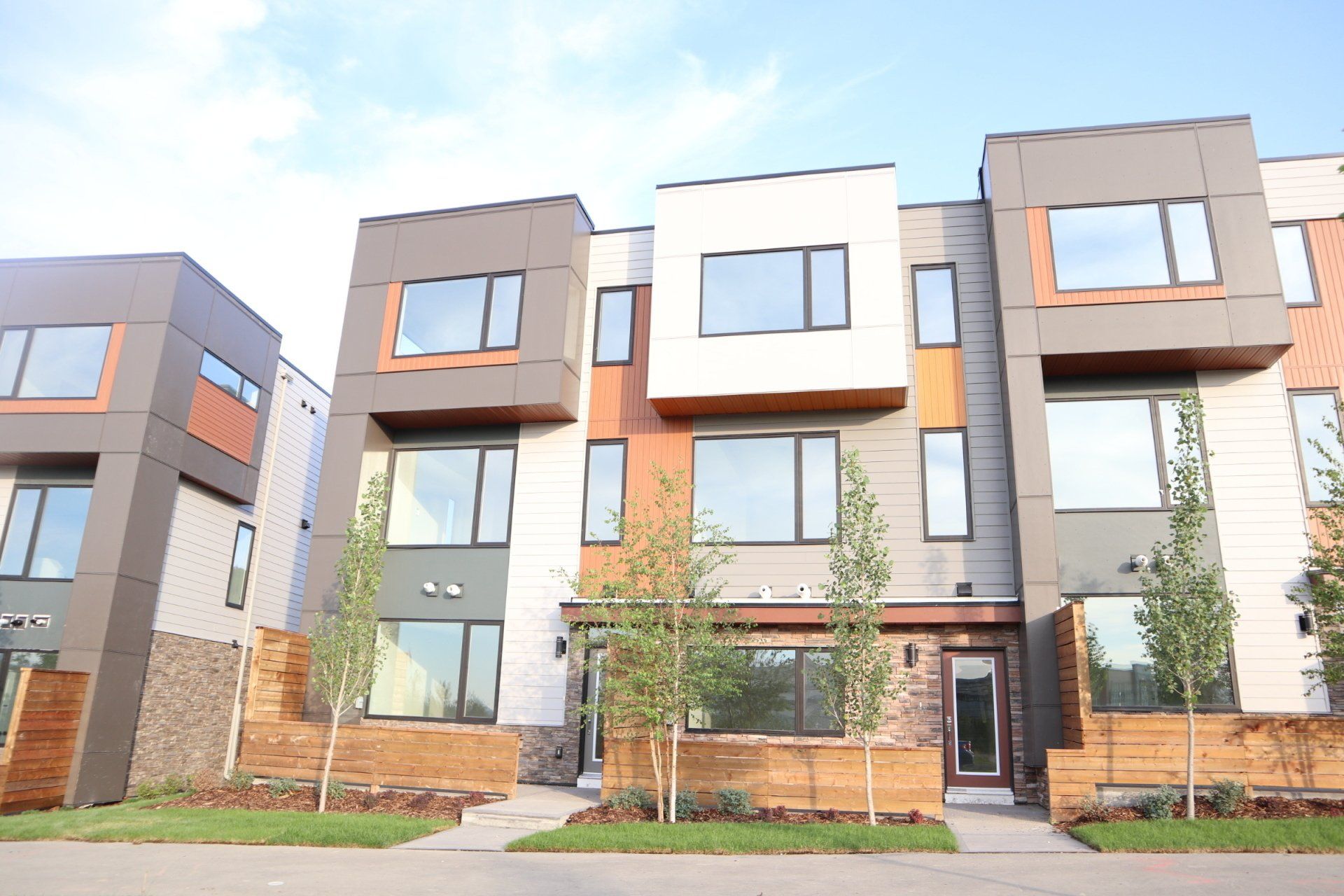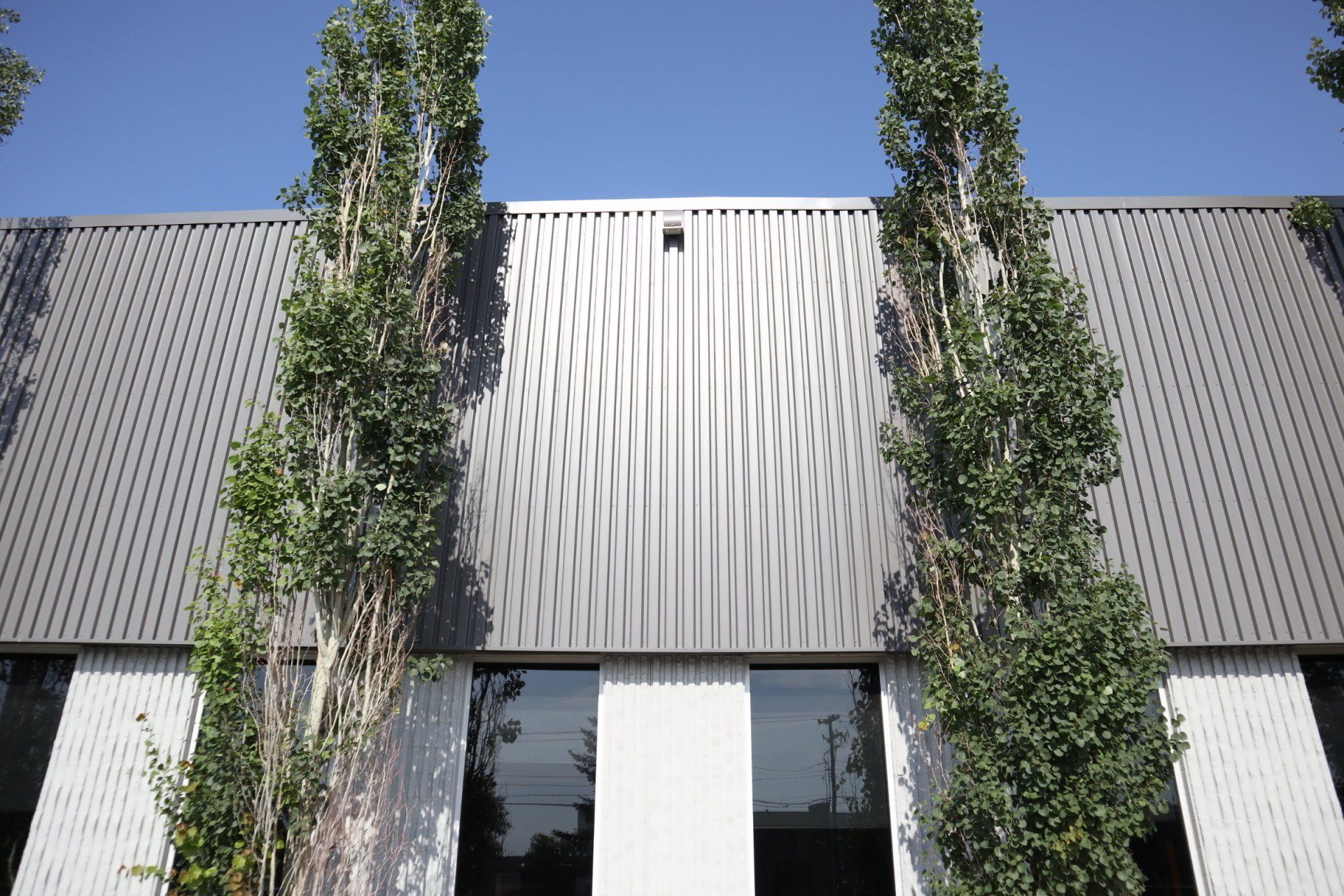Polyethylene vs. Fire-Rated ACM Panels: What Calgary Property Owners Need to Know
Choosing the right cladding starts with understanding what’s behind the panel.
PE-core and fire-rated ACM might look the same from the street, but what’s inside determines how your building performs, how long it lasts, and whether it passes inspection.
Keep reading to learn how to tell which one actually belongs on your project.
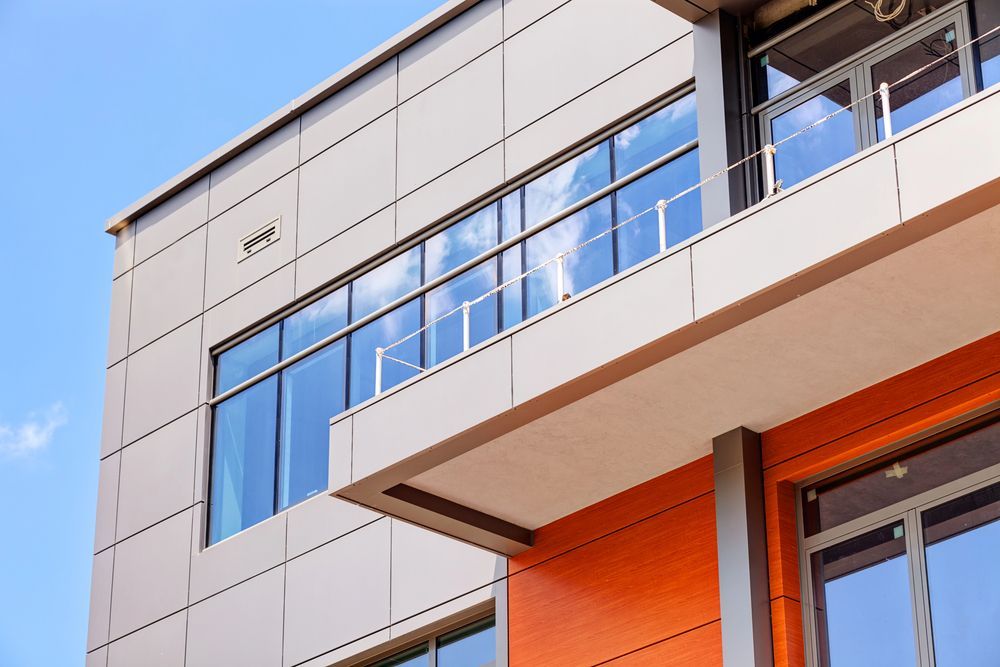
What Are PE-Core and Fire-Rated (Mineral) Core ACM Panels?
PE-core ACM panels have a solid polyethylene (plastic) core sandwiched between aluminum sheets. They’re light, flexible, and easy to cut — a solid choice for small commercial facades, signage, or budget-driven designs.
Fire-rated (FR) or mineral-core panels
replace that plastic with a denser, fire-resistant core. You get the same clean look but with a significant upgrade in fire safety and structural stability. It’s the difference between decorative and dependable.
Fire Compliance and Building Code Context
Canada’s National Building Code (NBCC) and Alberta Building Code (ABC) make it clear: cladding on mid- and high-rise buildings must meet strict fire performance criteria. PE-core panels are only allowed on certain low-rise or non-combustible-risk projects. For anything taller or public-facing, you’ll need fire-rated or mineral-core systems — no exceptions.
Long-Term Durability and Performance
Calgary weather doesn’t play nice with cladding systems.
Freeze-Thaw and Weather Resistance
Both PE and FR ACM handle moisture and corrosion well; however, FR cores are more dimensionally stable, resulting in fewer expansion gaps, tighter seams, and a smoother facade during temperature swings.
UV and Aging
FR panels also outperform over time under UV exposure. Where PE cores might flex or fade after years of exposure to Alberta's sun, mineral cores remain firm and consistent.
Warranty and Longevity
Manufacturers back most ACM panels for 20–30 years, but only fire-rated assemblies carry warranties tied to code compliance.
Which Core Makes Sense for Your Project?
It all depends on what you’re building and how much risk you’re willing to carry.
Low-Rise or Light Commercial
If you’re working on a single-storey retail or signage project, PE-core panels can still be a viable option. They’re affordable, lightweight, and quick to install — just confirm your design meets local fire code allowances.
Mid- to High-Rise or Public Buildings
For any multi-storey building, fire-rated or mineral-core ACM isn’t optional. It’s the standard. You get peace of mind, code compliance, and stronger fire protection. These details keep insurance providers happy and inspectors off your back.
Balancing Tradeoffs
Every build has tradeoffs: cost, speed, safety, and performance. Ask for full assembly testing reports (not just panel ratings). Phoenix Metals can provide CAN/ULC S134 certifications and help verify your entire rainscreen setup passes fire criteria.
Talk to the Experts Who Know Calgary
Phoenix Metals has supplied and advised on facade systems across Alberta for decades — from downtown Calgary towers to rural municipal builds. If you want panels that meet fire code, withstand the weather, and look sharp for decades, we’ll help you get there.
Contact Phoenix Metals today to discuss certified ACM options and project-specific recommendations before you begin construction.
